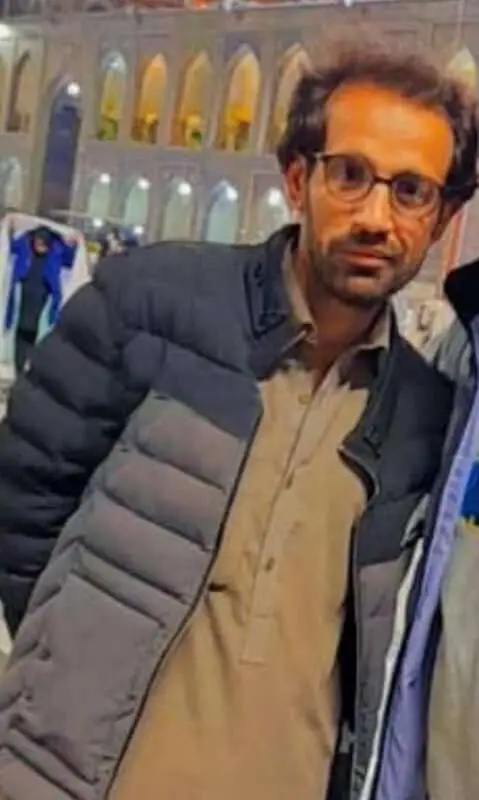This is the severely disabled man who can barely walk and who the Iranian security forces have seized as a suspected terrorist arms dealer, it has emerged.

Abdol Naser Gorgich, from the city of Zahedan, the capital of Sistan and Baluchestan Province in south-eastern Iran, which has seen considerable unrest in recent weeks, suffered devastating injuries in an accident.
He cannot drive or even walk properly because half of his body is numb from severe nerve damage.
And as well as suffering serious damage to his motor nerves – and nerve transplant surgery – he also lost one of his eyes and his jaw bones were replaced with platinum.
But security police seized him when he was a passenger in his brother’s car after he and his friends went to fill it up with petrol on 18th October.
Iranian security forces have reportedly accused him of “carrying and buying and selling weapons”, “membership in anti-government groups” and being a “leader of riots”.
A source – who was not named for security reasons – reportedly told the independent Iranian media outlet Iranwire: “Until six or seven days later, the family did not hear anything about him and were worried about the condition of their disabled family member.
“After a week, Abdol Nasser finally called his family and said that he was arrested and they allowed him to call and just say that he is fine and alive.”
And the source also reportedly said on Tuesday, 8th November: “For about two weeks, the family had no news from him until yesterday (Monday) when he called and said that he was transferred to the general ward of Zahedan prison.”
Abdol Nasser’s friends have reportedly said that the man was made to spend three weeks in solitary confinement.
He reportedly told his family on 7th November that interrogators had forced them to sign some documents. The unnamed source reportedly said: “The interrogators have told him that the only way out is to accept whatever they say.”
The friend added that Abdol Nasser told him: “I accepted everything they said to get out of there. I accepted everything to either be freed at last, or to no longer be in their hands.”
It is understood that at the time of writing, he had not yet been released.
The friend said: “Abdol Nasser did not cooperate with any group, because of his disability, he cannot even throw a stone. I don’t know what plan they have for them to have made such accusations against him.”
One of Abdol Nasser’s friends reportedly told Iranwire that the security forces went through his phone and accused him of being linked to anti-regime groups when they saw that there were foreign telephone numbers on his phone.
But his friend explained that many people from the region have to go abroad for work, leading to families often having relatives in Afghanistan, Pakistan and Arab countries, among others.
The friend said that if the interrogators saw that a number was from Afghanistan, for example, they then linked it to the Taliban.
If it was a Pakistan number, they would claim that he had co-operated with active terror groups.
Hundreds of people have been arrested in Zahedan in recent weeks after protesters attempted to storm three police stations on 30th September.
It led to the Zahedan massacre, also known as Bloody Friday where at least 96 people died and more than 300 were injured.
Iranian forces have been cracking down on waves of civil disorder following the death of Mahsa Amini, 22, from Saqqez, Kurdistan Province, who was on a visit to Tehran when she was arrested by morality police, accused of violating hijab rules on 13th September.
She was allegedly beaten while in custody and spent the following days in a coma in the hospital before succumbing in the ICU on 16th September.
The clinic where she was treated said in a now-deleted social media post that she had been admitted brain-dead.
Alleged medical scans of her skull leaked by hackers showed that she had suffered bone fractures, haemorrhages, and brain oedema.
Independent Iranian media have claimed that Mahsa’s medical records showing her history of heart disease were faked by the Iranian government.
Numbers differ regarding how many people have been killed since the protests began.
The protests have so far claimed at least 328 lives, including 45 minors, and injured at least 1,160, according to independent estimates.
It is also understood that over 14,825 people have so far been arrested.



